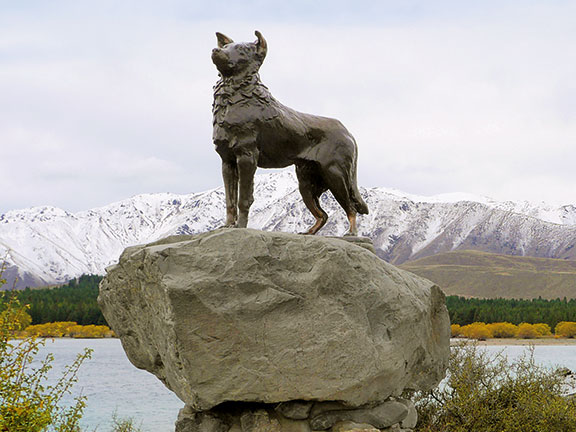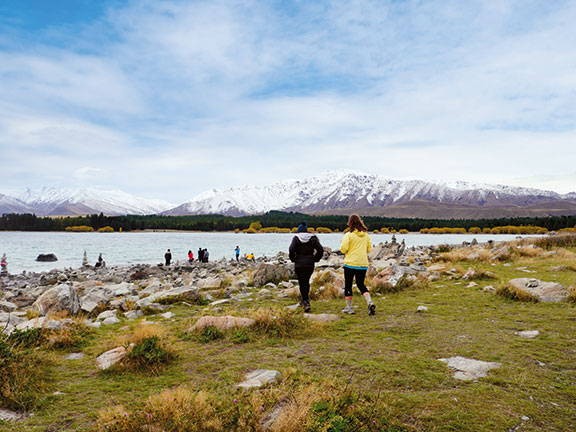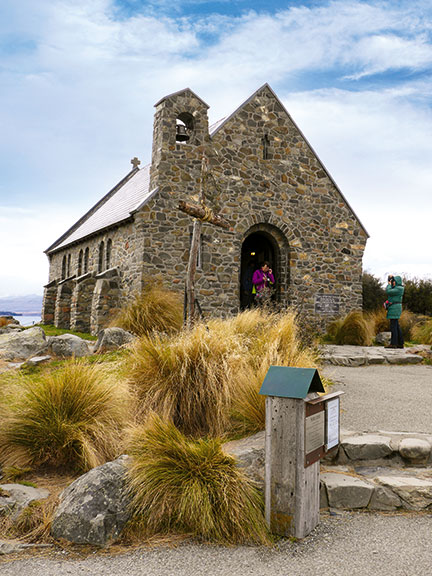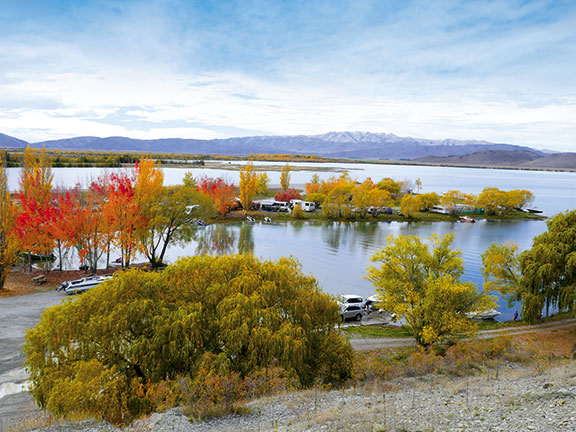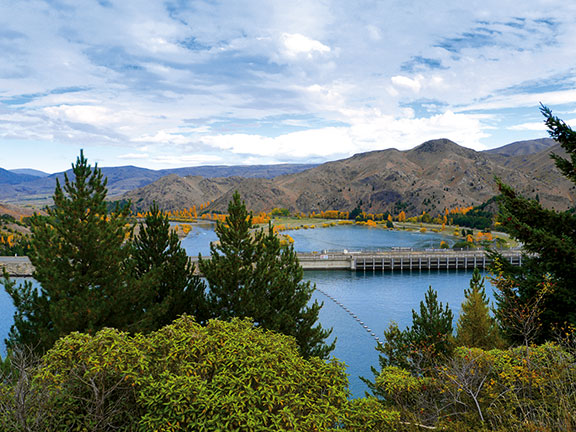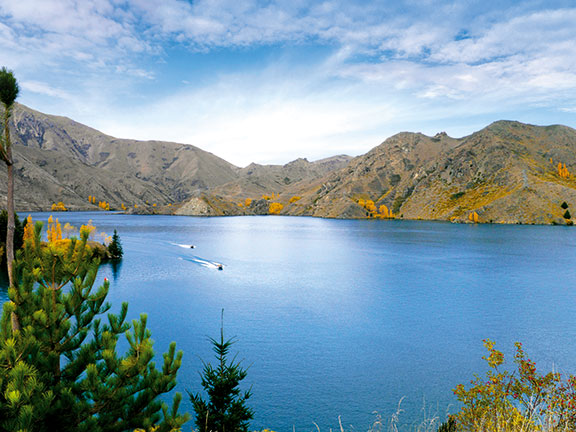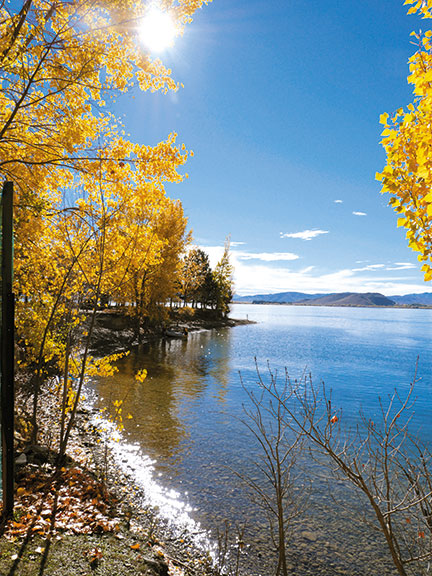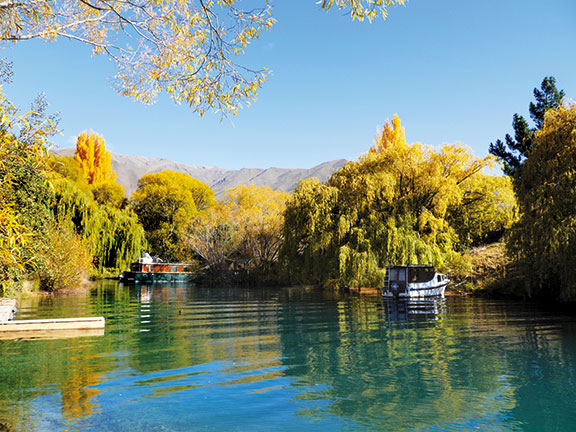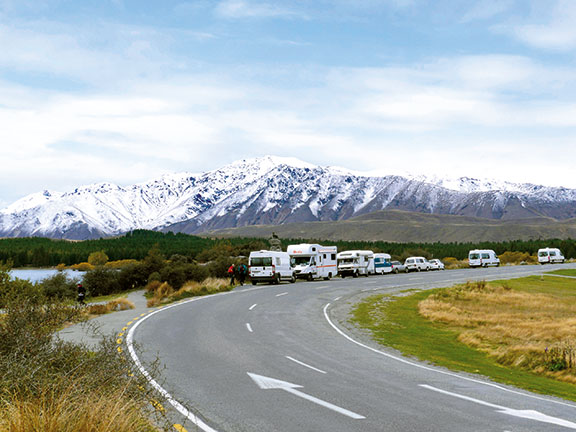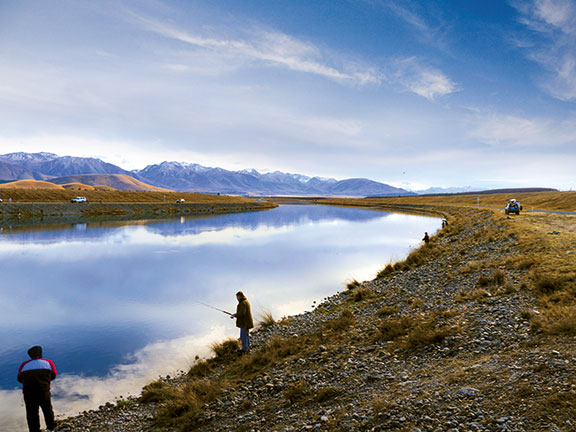James McKenzie might roll over in his grave at the misspelling of his name, but the Scottish shepherd and rustler would no doubt be justifiably proud of his namesake region.
The Mackenzie Basin — named by the errant shepherd in the 1850s — is the country's largest basin, containing not only the country's highest peak (Aoraki Mount Cook) but also Lindis Pass, the South Island's most elevated, and the world's largest dark sky reserve. This is truly big-sky country.
Here, existing lakes, together with wild and braided rivers corralled into a series of lakes and canals, feed the needs of a power-hungry nation. These waterways also create a stunning recreational area, unsurpassed for year-round activities.
Winding through the basin is the Waitaki River, which flows for more than 100 kilometres past three glacial lakes: spectacular Pukaki, Tekapo, and Ohau. Along the way it also encounters the hydro Lakes Benmore and Aviemore — each with their own dams — and Lake Waitaki, the smallest and oldest of the man-made lakes.
The middle of the Waitaki River marks the boundary between Canterbury and Otago. Fed by snow and glacial melt, the Mackenzie Basin also includes the Ahuriri, Hakataramea, and Tekapo Rivers, and the natural Lakes Ohau and Alexandrina, together with the small, but increasingly popular, Lake Ruataniwha — the home of South Island rowing.
Camping in Mackenzie country
The Waitaki District council supports wild camping and offers eight good, basic camping facilities between the third Saturday in September and the first Sunday in May.
Visitors can overnight from $15 per person or buy a season ticket from the council. All camping facilities have basic toilet facilities and are close to boat ramps.
This is camping at its basic best, in some of the most beautiful remote lake or river-side locations. Stock up before you set out, at Tekapo, Twizel, Omarama, or Fairlie. Mount Cook's limited shopping facilities extend mostly to restaurant food, souvenirs, or clothing.
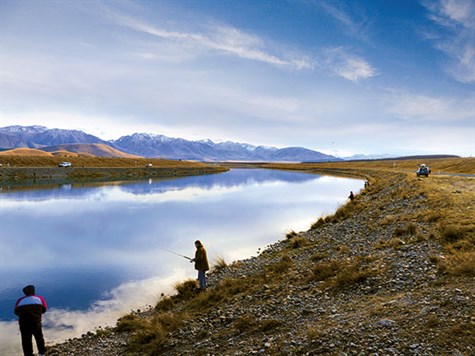
The majority of settlements in this sparsely-populated region began their lives as hydro towns. Among them is Twizel, which is one of the fastest growing towns in New Zealand. It is a popular alpine resort, the closest to Aoraki Mount Cook, and reputed to be a fly fisher's paradise.
Certainly when we were there at Easter time, fishers were everywhere in evidence on the rivers, canals, and lakes. Most intriguing to me, for the complete novelty of it, were those lining the canals, hoping to catch a rogue salmon escaped from the farms.
Mt John Observatory
A short distance along the road from Twizel, the light catchers await at Mt John Observatory, near Tekapo. Here, as part of their role in an international programme designed to detect collapsing stars, scientists recently witnessed the light transmitted by two exploding stars — an event that occurred more than 11 million light years ago.
In this way, the remotely-located observatory, boasting some of the clearest night skies in the world (and some of the lowest levels of light pollution), has become a significant contributor to the international study of astronomy.
Its status was recognised in 2012 when the 4300 square kilometres surrounding the observatory became the world's largest International Dark Sky Reserve. This is also home to the New Zealand's largest telescope, a 1.8-metre eye to the sky, created in a unique partnership between four New Zealand universities and the University of Nagoya, Japan.
If this academic endeavour sounds too remote to excite your interest, Mount John offers a great deal to the casual day visitor. On a clear day you can see forever — well, almost forever. Depending on the conditions, you'll see the full 360-degree view of the Mackenzie Basin and close up views of lakeside Tekapo, just 300 metres below.
If the weather packs it in, shelter from the storm at glass walled and roofed Astro Café — voted by Lonely Planet as "possibly the best place on earth to have a coffee". The café opens at night as well, to offer complimentary hot chocolate to those booked for a Mount John Night Tour.
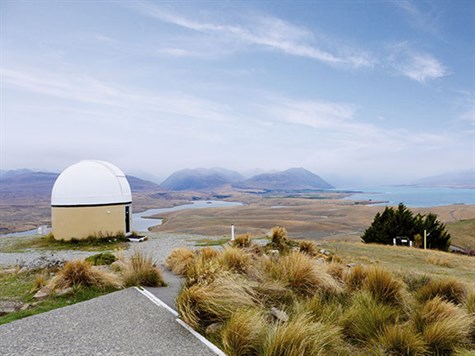
Mount John is officially the windiest place in New Zealand. Here, in 1970, a wind gust of 250kph was recorded. And it can get mighty cold up here at any time of the year, so participants in the night tours don Antarctic-grade jackets to view the night sky through small, but powerful telescopes. On cloudy nights, visitors will still be inducted into the world of an astronomer when they get a behind-the-scenes view of the working equipment at the observatory.
The night tours take around two hours. But if you're not sure you can stay up late enough for the stars to arise, you can also participate in a shorter version — Cowan's Observatory Tour — which uses similar equipment, but operates from Cowan's Hill Observatory, just behind Lake Tekapo. Cowan's Tour mostly operates in the summer months and is around 80 minutes in duration.
Activities in Mackenzie country
Among the other activities for which this region is favoured — skiing, mountain climbing, horse riding, and jetboating — New Zealand's top gliding companies also work out of Omarama, considered the world's best mountain soaring site. It is also the base for scenic flights and flight training.
We watched some historic footage of mountain gliding while at The Sir Edmund Hilary Alpine Centre within The Hermitage complex at Aoraki. It was majestic, and while I admire the brave souls who undertake it, this is the closest I am ever likely to get to soaring through the Southern Alps.
As an aside, The Hermitage toilets (on the ground floor near reception) are the best I have encountered on my travels simply because of the invisible handbasin. You will have to visit for yourself to see this man-made wonder.
On this occasion, Aoraki Mt Cook was not putting on the best display, much to the co-pilot's disappointment. He had hoped the persistent drizzle would give way and we would be rewarded with a dazzling view of the mountain. Had that been so, we would have stayed a night at the DOC camp.
Another time, perhaps, for there is much to see and do here, including nine walks (from 40 minutes to full-day walks) taking in the lakes and glaciers of the Hooker and Tasman Valleys. In summer, Tasman Glacier Terminal Lake makes for good swimming, while in winter icebergs can be seen from a viewpoint above the glacial lake.
I regret our photos cannot do Mackenzie Country justice. However, I hope you will get the picture and be inspired to visit the magical Mackenzie Basin where you just might, as I did, get a glimpse of God in the landscape.
Check out these Tekapo travel tips and subscribe to Motorhomes, Caravans & Destinations magazine here.

